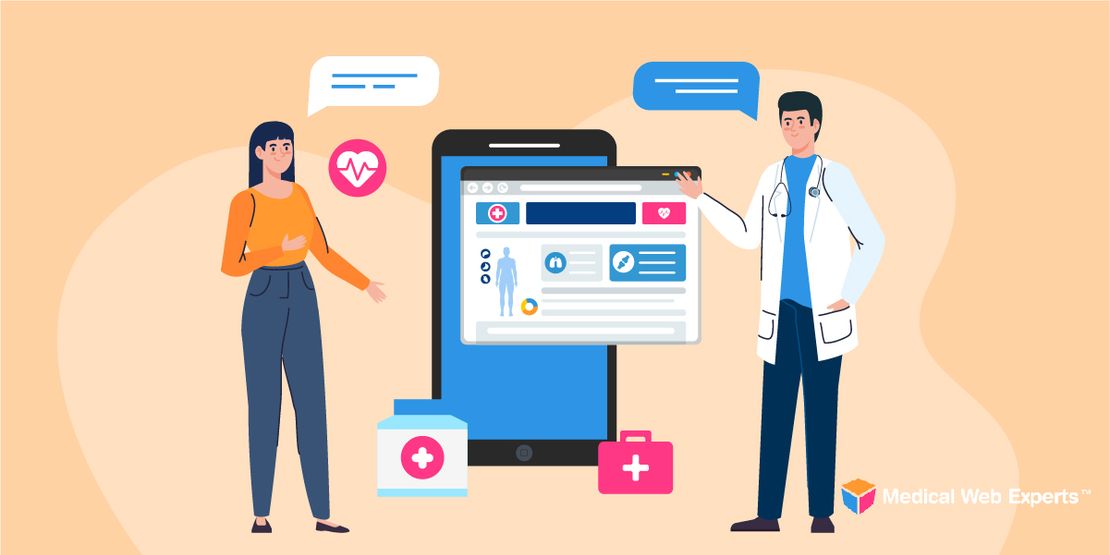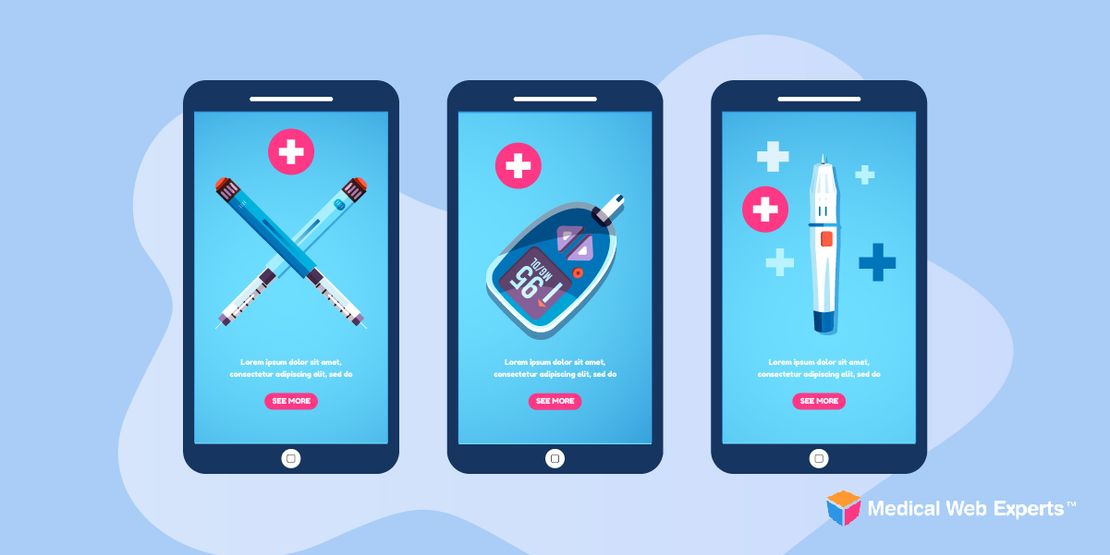It’s no secret that COVID-19 has led to heightened digitization in healthcare with permanent changes in how care is accessed and delivered across the patient journey. While many patients have been crying out for more digital healthcare services for years, the need to limit personal interaction during the pandemic has put concepts such as “telemedicine” and the “digital front door” front and center.
While many healthcare providers are unsure of how to get started, there’s never been a more urgent need to develop your own digital front door strategy. Here’s a quick run-down of some things you should keep in mind in order to build an effective digital front door.
What Is the Digital Front Door?
The “digital front door” is an umbrella term for all the ways in which patients interact with their healthcare digitally, from initial registration and online consultations to prescription refill requests, paying bills and accessing lab results and medical records.
More than just a simple patient portal or standalone app, the digital front door represents a new, consumer-friendly way to coordinate and streamline every stage of the healthcare journey across digital touchpoints. Effective digital front door strategies have been shown to boost revenues and productivity, improve patient outcomes, and create higher levels of patient satisfaction.
Why Do Healthcare Organizations Need a Digital Front Door Strategy Right Now?
COVID-19 Has Shifted the Status Quo
Before the COVID-19 pandemic struck, patients were accustomed to inconveniences and restrictions when it came to engaging with their healthcare. Booking an appointment often meant making a phone call during office hours, and even brief consultations or simple tasks like reordering medications necessitated a trip to the doctor’s office.
With national lockdowns making in-person appointments difficult, however, both patients and practitioners have now experienced first-hand the positive effects of digitization. The surge in online activity that came in the wake of COVID has led to a shift in patient behavior and expectations, with people now demanding a choice between in-person and remote care options wherever possible.
In some ways, though, COVID-19 has only forced healthcare providers to offer what consumers have been demanding for some time. Whether it’s shopping online, transferring money or requesting an Uber ride, today’s consumers clearly prefer online services that provide convenience and freedom — and the same goes for their healthcare providers. As healthcare organizations start catching up to other industries and updating their digital offering with telemedicine and self-service tools, it’s clear that patients will expect these services to persist after the pandemic is over.
Operational Efficiencies and Smarter Workflows
Even before the COVID pandemic, medical organizations were struggling to cope with increased workloads, disjointed tools, lackluster communication, and unmanageable amounts of data that have become a reality of 21st-century healthcare.
With an effective digital front door strategy, however, every part of the patient journey can be effectively coordinated and tied together. A cohesive experience across digital channels not only provides more seamless and simplified interactions for patients, but major business advantages. A digital front door can help improve communication between teams and with other organizations, streamline internal processes and workflows, and make better use of data, leading to a boost in productivity and operational efficiency at a time when medical services are under severe financial and time-based pressure.
How to Build a Successful Digital Front Door?
Common Pitfalls
Design
When it comes to websites, patient portals, and other digital channels, practitioners all too often neglect the very things that patients have come to expect from digital services: sleek, modern design and an intuitive user experience. Failure to incorporate good design can result in poor usability and negative perceptions of your brand. Design must be a priority. Healthcare website design is a critical component toward a strategic digital front door strategy since it’s often the first touchpoint a consumer has with your company.
Fragmented Solutions
Another common pitfall is to take a scattered approach to digitization, creating standalone apps or platforms that don’t communicate with one another, require different logins to carry out various tasks, and are difficult to manage. This lack of cohesion leads to frustration and confusion on the part of the patient.
Personalization
When designing a digital front door, it’s important to draw on learnings from consumer-centric leaders in other industries such as Netflix and Amazon, whose success has partly been built on the effective use of data to personalize their services. If healthcare providers take a one-size-fits-all approach to their digital front door, they risk alienating users who want a tailored experience.
Key Features
Many less successful digital front door strategies don’t provide the kind of features patients actually want. While every digital front door strategy will be unique to the healthcare organization, there are a number of key features you may want to consider building into your solution, regardless of whether it’s built as a web app (available within any web browser) or a mobile app:
- Intake: Introducing secure registration and check-in for new patients online is a great way to reduce the administrative burden on staff and time spent in the office filling out paperwork.
- Scheduling: A 24/7 appointment scheduling feature can make life easier for both patients and receptionists — reducing the staff time required to input information while enabling patients to book a visit whenever and wherever they choose.
- Communication: Secure messaging services and video conferencing software can facilitate easier and more convenient patient-provider interactions while decreasing call volume, in-person waiting times, and the need for face-to-face consultations.
- Lab Results: During COVID-19, quick and effective testing and the rapid submission of test results became an essential service. Integrating a secure portal where lab results can be instantly forwarded to the patient is becoming the norm. Medical Web Experts has become a leader in this space. In Spring 2020, we worked with a Minnesota-based testing laboratory to massively ramp up their curbside testing operations. Within six weeks, we built a mobile-responsive web app with robust features that have allowed the company to increase their testing capacity 400% per day and deliver 95% of test results within 24 hours.
- Bill Pay & Insurance: Speeding up the payments process and reducing late or missed payments is a key concern for any modern healthcare provider. With digital bill pay services, you can make payments quick and easy for patients, sending notifications and reminders for when their bill is due. To ensure access to financial support, this type of service can also be integrated with patients’ insurance policies.
- Location-Based Services: Patients are increasingly looking for help finding a location and getting to your physical front door. For instance, amongst the many features included in a custom app developed for Baylor Scott & White Heart and Vascular Center, Medical Web Experts implemented in-demand navigation tools that not only help patients find the hospital, but navigate through it.
If you’re ready to set up your own digital front door, get in touch with us to find out more about how we can help you create a fully customizable and cohesive digital healthcare strategy.


